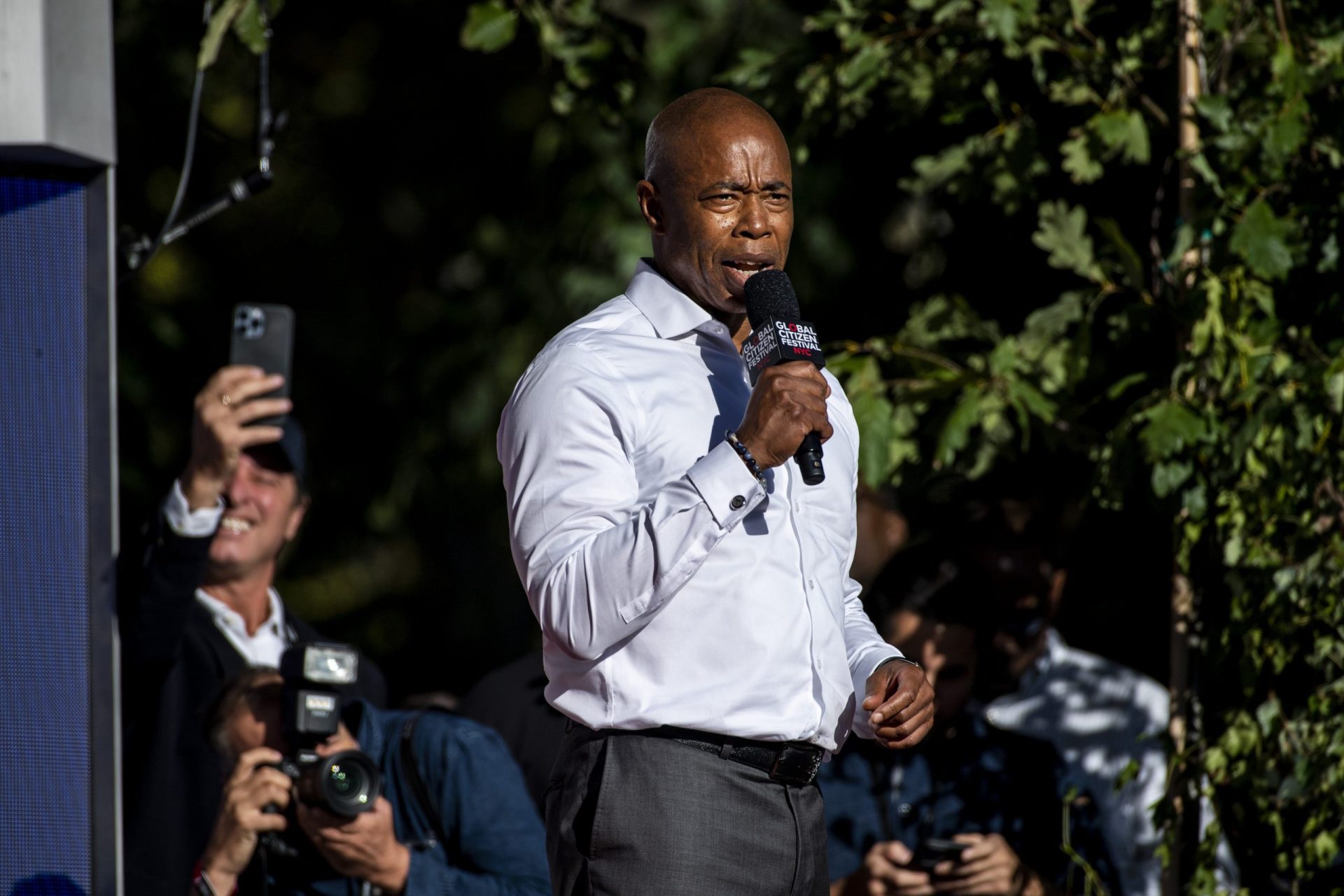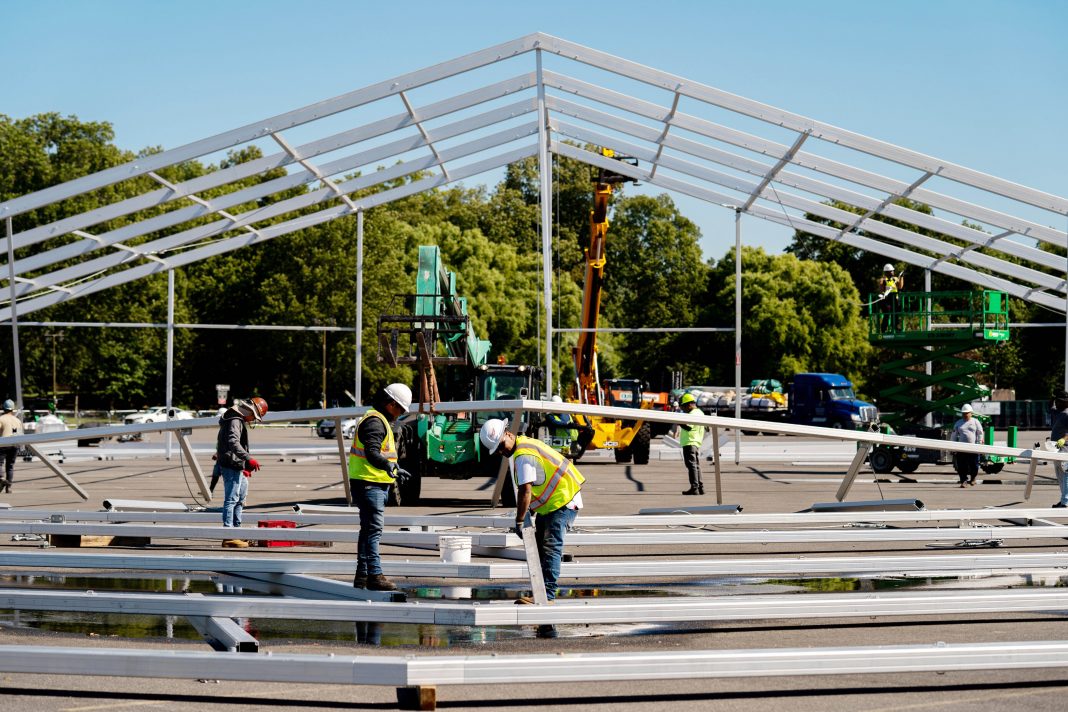The history of U.S. cities scrambling to address a humanitarian crisis when thousands of migrants arrive at their doorstep is now playing out far from the border in New York City where the mayor just announced a state of emergency on Friday.
“This is a humanitarian crisis that started with violence and instability in South America, and it is being accelerated by American political dynamics,” Eric Adams, New York City’s mayor, said during a news conference.
State law enforcement from Texas, Arizona and Florida is placing migrants on state-sponsored charter buses and sending them to the east coast. Gov. Greg Abbott gave the order to begin the practice in March.
“Texans cannot continue to shoulder the burdens imposed by open-border advocates in other parts of the country,” the governor said in his letter to the Texas Division of Emergency Management at the time.
Adams called their situation a manufactured crisis since the political tactic targeted only the Democratic so-called sanctuary cities.
Now, the city is overwhelmed by the need created after more than 17,000 migrants were sent to the east coast city since April.
Adams warned their economy could soon fold.
“It is burning through our city’s budget,” Adams said.
But while New York City, which operates on a budget of about $100 billion, struggles to stay afloat, McAllen officials, who just approved a $600 million budget, are relieved with the number of migrants received in their city during the same time period, though it’s double that of New York City’s total.
“Nowadays, it kind of seems like it’s easy, even though I shouldn’t say that,” Javier Villalobos, McAllen’s current mayor said. “But it is, compared to the way it was last year.”
Over 36,000 migrants were released from federal custody into McAllen’s jurisdiction from April through mid-September, according to the latest city data obtained by The Monitor.
Villalobos saw that as relief compared to 2021 when McAllen reached a breaking point. Over 103,000 migrants were released during the same April through September time period.
New York City faces a notable difference, however.
“No matter what the number is that we get here, their intention is not to stay; whereas in New York it might be a little different,” Villalobos said.
Migrants often only pass through the Valley but many of those arriving in New York City, where they have a right-to-shelter law, are staying put.
Adams said their shelter system is operating at 100% capacity with over 61,000 people — one in five of them are asylum seekers.
The problem existed before the bussing began, the executive director of Immigration ARC, Camille Mackler, said.
“Our shelter system has been very broken for a very long time here in New York City,” Mackler added.
The pandemic and rising cost of living placed stress on the buckling shelter system, Mackler said. Another key difference, she noted, is that the migrants arriving on the border now lack a support system in the U.S.
Without a relative or friend in the U.S., migrants released from federal custody are not immediately allowed to work and become dependent on help from the communities in which they arrive.
“We expect to spend at least $1 billion dollars by the end of the fiscal year on this crisis, all because we have a functional and compassionate system,” Adams said. “There’s no playbook for this, no precedent.”
Two-thousand miles away, Rio Grande Valley officials, through trial and error, created a kind of “playbook” to a similar situation they faced in 2014.
“I remember the night the city manager called and he said, ‘hey we’re getting ready to close the bus station and we have about 25 people here … they have no place to go,’” Jim Darling, McAllen’s mayor at the time, said Saturday.
That year, an unprecedented number of Central American families and children crossed into the U.S. seeking asylum, a change from the typical demographic of the single male Mexican immigrant. Most arrived at Valley riverbanks waiting to turn themselves in.

In May 2014, the Department of Homeland Security declared a crisis after visiting McAllen.
Unlike Adams, Darling did not declare a state of emergency, though some public officials disagreed. But like New York City now, Darling said the situation in 2014 was “unsustainable.”
“It’s not sustainable, and it’s not right,” Adams said Friday.
Mackler disagreed with the state of emergency declaration.
“I think it’s New York suddenly being confronted in a much starker way with a need that has existed for a long time that the country turned its eyes away from, which is what happens at the border when somebody crosses,” Mackler said.
Her organization, Immigrant ARC, provides legal assistance to migrants in the state.
“NYC leads the country in investments in legal services for immigrants,” Mackler said, but admitted they, too, are hitting a wall.
In spite of the growing need, nonprofit organizations are partnering with New York City to provide shelter, food and travel assistance.
Darling said they’re on the right track.
In 2014, Darling credited the partnership with nonprofit organizations, especially the Catholic Charities of the Rio Grande and its executive director, Sister Norma Pimentel, for helping the city create the needed infrastructure to funnel aid.
“It keeps the politics out of it, a little bit,” Darling said, referring to a partnership with nonprofit organizations. “And they’re more efficient than government.”
In the coming weeks, New York City will open a large humanitarian emergency response and relief center but it won’t be enough, their mayor said.
Adams called for federal and state assistance, too, and said it’s an “all hands on deck moment,” the exact phrase used by then DHS Secretary Jeh Johnson to describe the agency’s response in 2014.
Adams asked Congress to create “a realistic decompression strategy at the border that will slow the outflow of asylum seekers.”
He also wants other cities in the country to do their part by accepting asylum seekers.
Adams went broader, asking for immigration reform and legislation that will allow asylum seekers to legally work now, not in six months.
McAllen’s Republican mayor agreed with Adams, a Democrat.
“It can be a burden, but it also could be a benefit because we need workers,” Villalobos said.
“They just need to fix the infrastructure in a way that the logistics will work,” Villalobos said, optimistically. “I wish them luck, and they can do it.”




